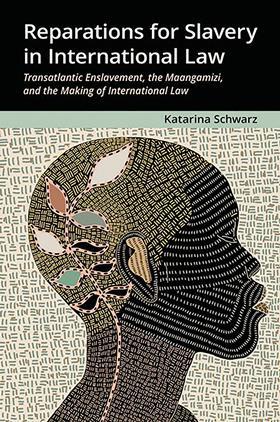An historical crime that cannot be left in the past
Reparations for Slavery in International Law: Transatlantic Enslavement, the Maangamizi and the Making of International Law
Katarina Schwarz
£80, Oxford University Press
★★★✩✩
Penrhyn Castle and Harewood House have nothing in common visually. The former is in a mock Norman style, overlooking the mountains of north Wales, the latter a graceful example of Palladian architecture outside Leeds that was the embodiment of the Age of Reason. Although in appearance the two buildings could not be more different, they share one feature – how their constructions was funded: each was built on the proceeds of the Atlantic slave trade, and the owners of both were handsomely compensated for the loss of the ‘property’ when Britain abolished slavery in 1833. Although trading in slaves was abolished in 1807, it took another 26 years for slavery itself to be made illegal. When it was, the 1833 legislation compensated former slave owners for their ‘loss’, a debt UK taxpayers funded until 2015.
Slavery in different forms is unfortunately still with us, but the genocidal and destructive Atlantic enslavement of millions of Africans should not be dismissed as ancient history. In her important text, Reparations for Slavery in International Law, Schwarz, an associate professor at the University of Nottingham’s Law School, looks at the evolution of international law against the background of transatlantic enslavement, and makes it clear that the story of enslavement – and its vast profits – is a wrong that cannot be left in the past.
Schwarz introduces us to the Swahili word ‘maangamizi’, a term that invokes both annihilation and destruction of communities and individual identities. That enslavement was a crime against humanity is no longer contentious. But what about the intertemporality principle: the defence that actions were ‘legal at the time’? The author rightly points out, quoting Maulana Karenga, that you cannot dismiss mass murder that was an accepted part of slaving by presenting it as ‘the collateral damage of a commercial venture gone bad’. Applying that argument, the murder of non-Aryans by the Nazis would have been lawful under the Nuremberg race laws. However, Schwarz acknowledges the fact that attempting to backdate the abolition of enslavement through international treaties to provide a basis for legal redress for transatlantic enslavement is a fruitless endeavour.

That is not necessarily the end of the story: even the ‘legal at the time’ defence is not a clear-cut defence. At the start of the 16th century slavery was illegal except in narrowly defined circumstances, usually bonded labour as a punishment or as retribution for those taken in war. But as the enormous demand for sugar and tobacco generated the profits which fuelled the expansion of Britain’s empire, the demand for slave labour became insatiable, and in the European mind ‘slave’ and ‘African’ became synonymous. Some spoke out against slavery, such as Lord Mansfield in his judgment in Somerset v Stewart [1772] 98 ER 499 (and perhaps even more clearly the 10-4 majority decision from the Court of Session in Knight v Wedderburn). Even after slave trading was made illegal, however, Lord Stowell in Le Louis (1817) 2 Dod 210 affirmed the primacy of international law over the domestic law of Great Britain, giving a remedy in favour of French slavers attacked by a British frigate on the high seas as France had not ratified the Congress of Vienna’s Declaration. There was no international instrument that could be used against enslavement until the 1841 Treaty for the Suppression of the African Slave Trade was agreed – and even that did little to stop slavery in the United States.
In the context of potential legal barriers to the payment of reparations – and thus a potential refutation of a positivist analysis of the legality of enslavement in any historical period – I’d have like to have seen a discussion of Radbruch’s formula ‘extreme injustice is no law’. It is certainly true that attempts through conventional legal channels for reparations have failed, as the author point out in cases such as Johnson v McAdoo 45 App DC and Cato v United States (1995) 70 F 3d 1103 (9th Cir); sovereign immunity and limitation being the rocks upon which those cases foundered. However, does this mean the case for historical reparation is a non-starter? The conscience of a nation can be stirred: Germany agreed to pay Namibia €1.1bn (£940m) as it officially recognised the Herero and Namaqua genocide at the start of the 20th century, although interestingly (and perhaps tellingly) the term ‘reparations’ was conspicuous by its absence in the negotiations. Individuals too have shamed states into facing up to the responsibility for profits made by ancestors, as shown by BBC correspondent Laura Trevelyan and author Alex Renton, who made public their reckonings with their families’ involvement in the slave trade.
The author concludes that where the legal frameworks are the mechanism through which injustice was realised, the purported legality of actions at the time ought not to be determinative of current rights. For my part, I’d rather take the lead from Gustav Radbruch and from ethical and moral principles not derived from any substantive (and temporary) rules, whether the laws of individual nations or through international instruments. However, for those who need the raw materials and tools to continue the fight for transitional and reparatory justice, Reparations for Slavery in International Law is going to be an indispensable guide.
I’d like to see a second edition in a couple of years, recording more states recognising the destructive nature of how they acquired their present wealth. While I suspect this is overly optimistic, at least works like this fuel the necessary debate among ethicists, lawyers and politicians.
Max D Winthrop is a partner at Sintons LLP in Newcastle































No comments yet